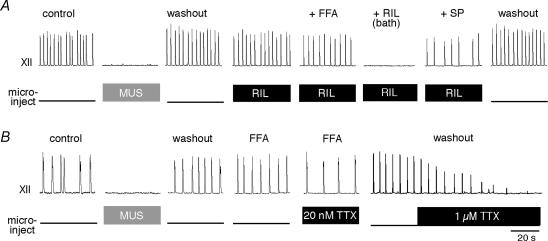Figure 6. Sequential drug application experiments using local microinjection of 10 μM RIL or 20 nM TTX.
Top traces show XII motor output, lower traces labelled ‘microinject’ reflect TTL pulses at 3 Hz that gate micropressure drug-delivery injections. A, bilateral injection of 15 μm MUS was used to verify the position of the microinjection pipettes, identical to Fig. 5. After recovering the rhythm, 10 μm RIL was microinjected for > 20 min, followed by bath application of 100 μm flufenamic acid (FFA). After > 20 min of bath-applied FFA (cumulative RIL exposure > 40 min), we added 10 μm RIL to the bath, which stopped the rhythm within 7 min. Finally 0.5 μm substance P (SP) was added to revive rhythmic activity. Recovery from all drugs occurred within 1–2 h and is shown as washout. B, bilateral injection of 15 μm MUS was used to verify the position of the microinjection pipettes (as in A and Fig. 5). After recovering the rhythm, we added 100 μm FFA for > 15 min and then microinjected 20 nm TTX for > 10 min. All traces depict the last 40 s of data acquired in each pharmacological condition. Time calibration in B applies to both experiments.

